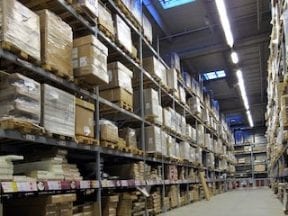Back in 2008, just before the Great Recession, I was managing a thriving ecommerce business selling jewelry supplies to crafters, artisans, and professional jewelers.
More than 30 percent of our revenue came from selling sterling silver at a very high margin. The impact of the Great Recession on our customers along with the sky-high price of silver forced us to retool our product catalog around low-cost, low-margin products.
The impact of the Great Recession… forced us to retool our product catalog…
Thirty percent of our revenue disappeared in a matter of months. We added new product lines, reduced staff, and conserved cash to prepare for the recession that was just starting. All of that coincided with a change in fashion styles, away from the type of jewelry that many of our customers produced. Though our revenue recovered by adding new products and customers, we never achieved the pre-2008 profit margins. We sold the business in 2012.
Fast forward to March 2020. We are living in a world I didn’t expect in my life as we address the spread of Covid-19. It’s not too early to consider the effects of this crisis on your company. Many of your customers, suppliers, and employees will likely be dramatically impacted. You may need to pivot your business over the next three to six months, similar to my situation in 2008.
Carefully reflect on the short- and long-term impact of this crisis.
Short-term, Long-term
- Customers. Many will be forced to reduce spending or purchase lower-cost items. Can your product catalog meet those needs? Should you reduce prices or stock different types and quantities of products?
- Products and suppliers. With so many products sourced in China and other countries, will your supply chain remain valid? Products could be delayed in transit or simply unavailable. Your suppliers may be forced to discontinue products or increase prices. Consider diversifying your suppliers. Evaluate new products that better serve the new reality for your customers.
- Employees. The economy will change forever in many ways. Your employees will likely change, too, with a new focus on health and workplace sanitation. Flexible work schedules could become more critical. The temporary, forced working at home may become permanent (and desirable). Outsourcing fulfillment could become necessary if staffing becomes too difficult.
- Balance sheet. Take a hard look at cash flow if you encounter a downturn in sales. Many ecommerce companies are reporting an increase in sales as physical stores close and consumers stockpile goods. But that increase will likely be temporary. To preserve (or generate) cash, considering refinancing loans or taking out new ones. You may need the money to fund new products or to avoid layoffs. Delay capital investments if possible. Bottom line: conserve cash.
- Your brand. You are likely receiving emails from vendors, customers, and industry colleagues that address how the crisis impacts their relationship with you. Consider doing something similar. Reflect also on how you can help your customers in this critical time. Avoid damaging your brand by appearing not to care or by gouging customers.
The New Normal
This crisis will pass, but it will change the world. Until then, make critical changes to survive the storm and prosper in the “new normal” afterward.




